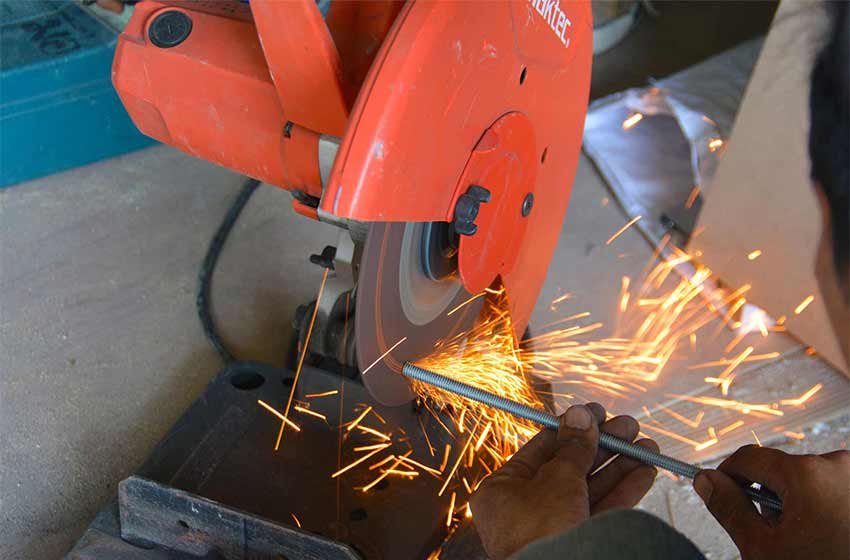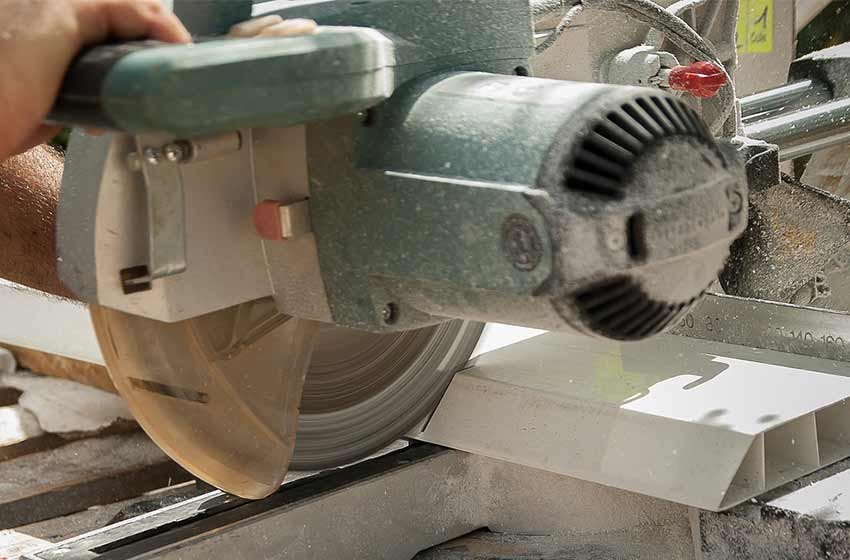Our Best Guide To Drilling Hardened Steel
Drilling hardened steel is not an easy job, this type of metal is brittle and hard, making it difficult to drill without damaging your drill bit or the metal itself.
This doesn't mean you should quit however, drilling hardened steel can be done safely and quickly with the right equipment such as a sharp drill bit, clamp, lubrication and determination! Drills that have weak material should be avoided, as this will make your job much harder.

To find out more about how you can drill hardened steel in the best way, we have put together a short guide below that will give you all the information you need to drill through that steel!
What Is Hardened Steel?
If you are faced with the task of drilling hardened steel, then it's a good idea to learn some more about this metal so as you can be drilling it efficiently and understand its uses.
Hardened steel is carbon steel and will often be used to make heavy-duty machines and parts on tools. Hardened steel is made by heating it to very high temperatures through a process called tempering and quenching, in other words, heating and cooling, this is done several times to improve the strength of the steel yet make it less brittle.

You can also find case hardened steel which is even tougher than typical hardened steel and used to make drill bits or car parts.
Hardened steel has advantages over other metal types as it doesn't rust easily and is very durable, however, due to the molecules being so close together after the hardening process, this makes it very hard to drill through, it also has a fairly low melting point due to the hardening process it has gone through.
Which Drill Bit Is The Best For Drilling Hardened Steel?
Choosing the right drill bit for drilling hardened steel will determine whether you can finish the job or not, if you use the wrong drill bit on hardened steel you could potentially risk it snapping due to the toughness of the metal and the heat.
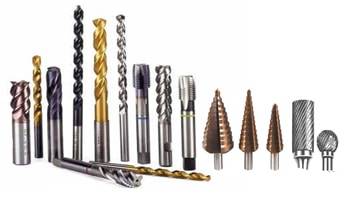
We have listed out some typical features to watch out for below in a drill bit if you want to drill hardened steel with ease.
- Material - When choosing the right drill bit for hardened steel, you should ensure you pick the right material, the most popular durable materials to choose from are; cobalt, carbide and high-speed steel. Choosing the wrong material can result in the drill bit snapping.
- Flute design - The flute of your drill bit refers to its twisting pattern that you see, you will likely be faced with the choice between choosing parabolic or 30-degree flutes, and in the case of hardened steel, we recommend choosing the 30-degree flute.
- Coating - Choosing a drill bit with the best coating is important as it will determine how quickly the bit will wear down, you should look for a coating of TiCIN or black oxide if you are after durability.
- Drill point angle & length - It's best to go with a short drill bit if your going to be working with hardened metal as this will give you more accuracy, an 135-degree angle will also help you drill even faster.
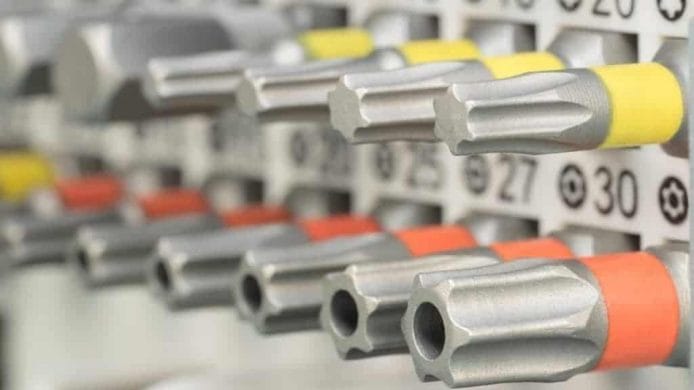
How To Drill Hardened Steel (Step By Step)
Now we know what hardened steel is and how to choose the best drill bit for this job, let's get on to how to do it quickly and efficiently. You should always ensure you have your selected drill bit and metal with you beforehand, keep the workspace clear and wear appropriate safety equipment as you will be dealing with very brittle metal.
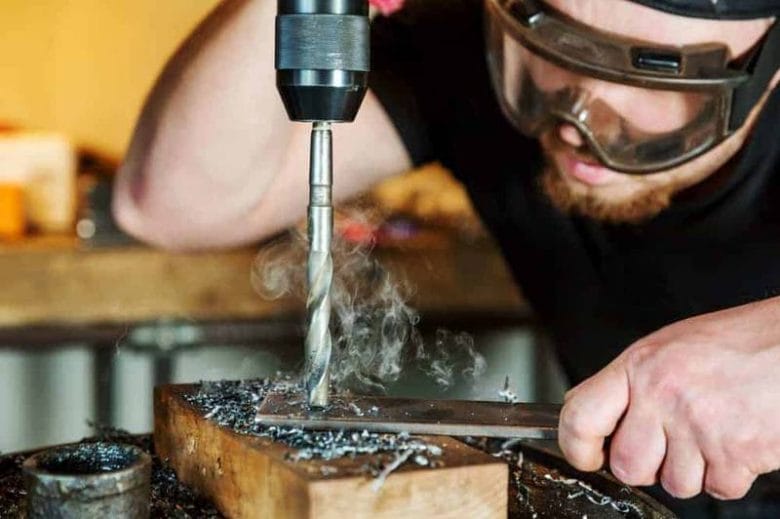
Tools Needed
- Safety equipment such as goggles.
- Steel.
- Drill bits.
- Pencil.
- Clamp.
- The drill.
- Cutting fluid/lubrication.
Step One - Clamp Your Steel Down & Use The Right Drill Bit

One of the first steps you need to take before drilling is clamping your chosen piece of metal down, this will ensure that everything stays tight and secure during the drilling process, improving accuracy and reducing the chance of injury.
Also, pick the right drill bit for the hole you are going to make, always make sure that it is half of the diameter of the hole that you are looking to drill.
Step Two - Lubricate For Better Drilling

One of the best ways to keep the temperature down and protect your drill bit when drilling is by lubricating the drill bit itself with some cutting fluid or oil, you could use water too as this reduces the friction between the hardened steel and the bit.
Step Three - Mark & Measure Your Hole

Use a pencil or a marker to draw and measure where you will want your hole to be so you can see exactly where you need to be drilling, ensure the hole is of the right diameter too.
Step Four - Start the Drilling
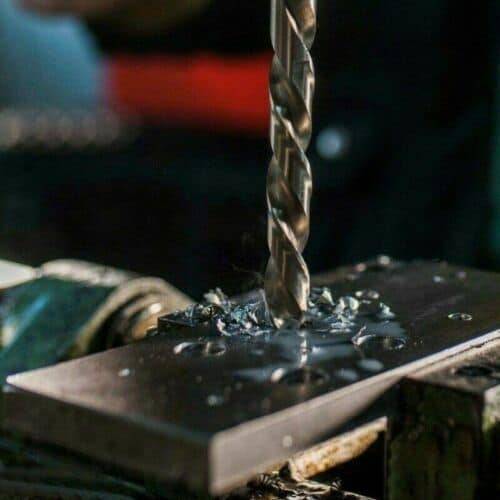
Now everything is prepared and marked, you can start drilling your steel. Always ensure you are holding the drill perpendicular to the hole and maintain a steady pressure at a low speed when working with this type of metal. Keeping a low speed will also help the drill bit to keep a low temperature, make pauses while drilling too.
Step Five - Finish Up!
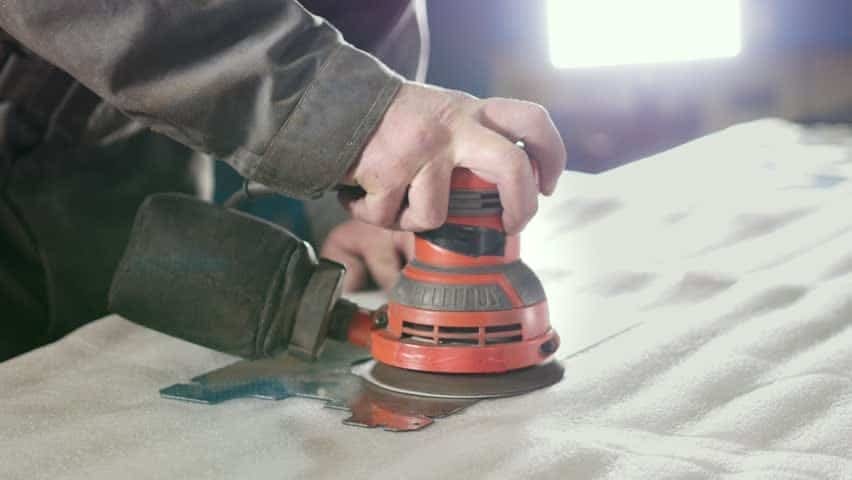
After making the hole in your hardened steel you can now take away the lubricant with a cloth once the steel has cooled and use a rasp to sand off any sharp pieces of metal if you wish.
Safety Tips For Drilling Hardened Steel
As hardened steel is not easy to drill through due to its tough composition, you should ensure that you are protected with the correct safety equipment throughout the drilling process to avoid any accidents from happening.

We have listed out the best safety tips below to use if you are going to be drilling hardened steel.
- Work at a low speed - When working with tough hardened steel it is ideal for you to be working at a low speed, this will ensure you have full control over the drill and can maintain stability/accuracy.
- Wear goggles & ear protection - There is a chance of metal flying off while drilling which could enter your eyes, drilling this material is also quite noisy, so wearing goggles and some kind of ear protection throughout the process is recommended.
- Ensure your material is clamped - So as your metal can't fall halfway through and cause an accident, make sure everything is very tightly clamped before you begin.
- Use an apron & mask - Just as we mentioned above, there is a chance small metal pieces could come off while drilling, wearing a thick apron and mask can protect you from this.
- Never touch the metal after drilling - The drilling process can heat the metal around it due to the high friction created, always let the material cool down before touching it.
Frequently Asked Questions About Drilling Hardened Steel
What is a masonry drill bit?
This drill bit is also known as a carbide-tipped bit and can be used to drill materials such as bricks, stones or other brittle and hard materials like hardened steel, making it very suitable for heavy-duty drilling.
How can you tell if a metal is hardened?
You can check the hardness of your metal with a Rockwell testing machine, this machine will push a piece of a conical diamond tip or rounded steel ball into the metal then measure the depth of the indent to indicate hardness.
What is a drill press?
A drill press is pretty much a drill but placed on a fixed stand, this stand has extras such as a clamp and is best used when dealing with tougher materials such as hardened steel as it improves accuracy and makes it safer.

Final Words
Overall, drilling hardened steel will only become difficult if you have the wrong tools, as long as you ensure you have the right drill bit on hand that can tackle this tough metal, you will find the drilling a simple and quick process. Continuously wear safety equipment when drilling hardened steel and make sure to work at low speeds to improve accuracy too.







